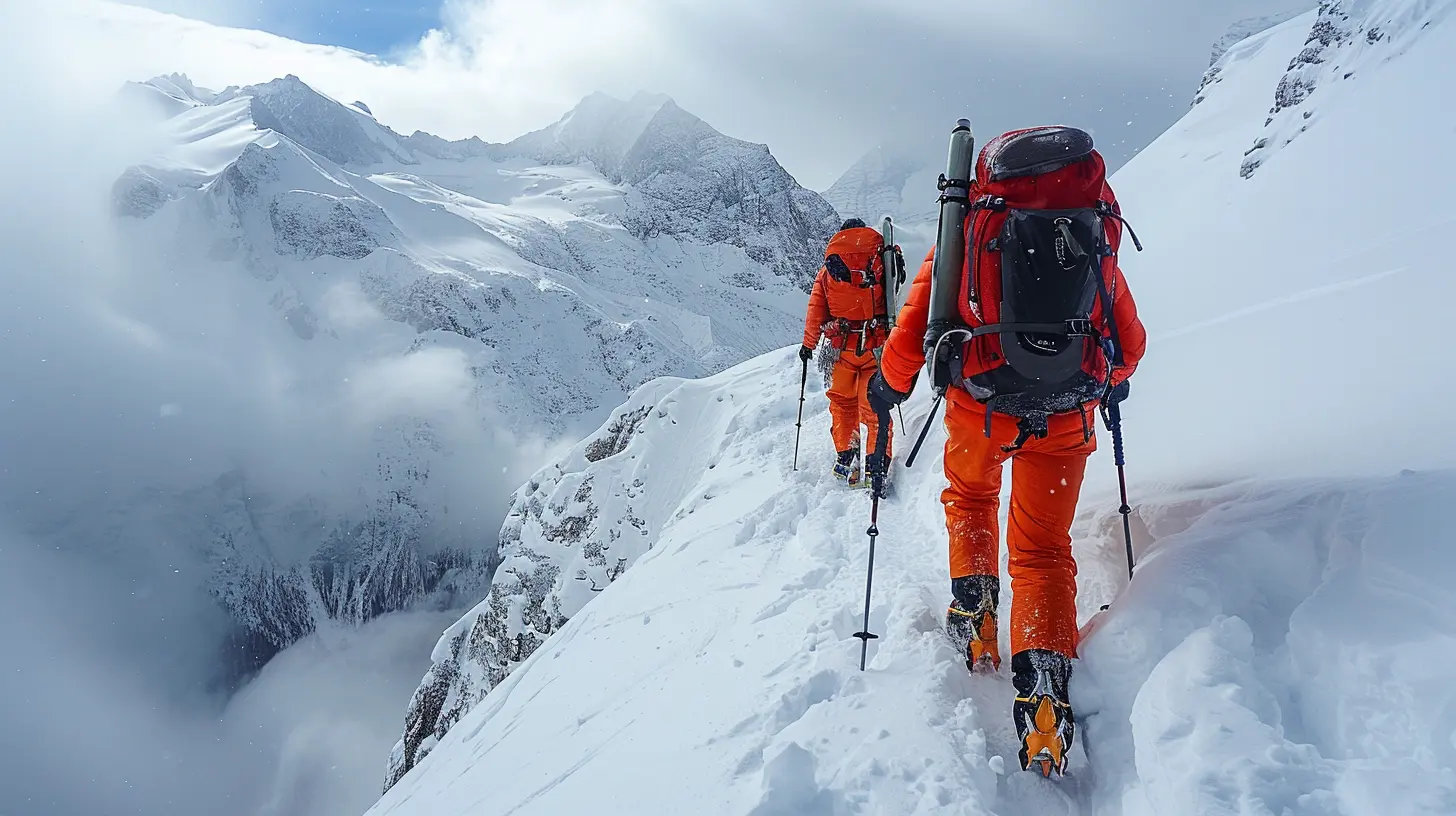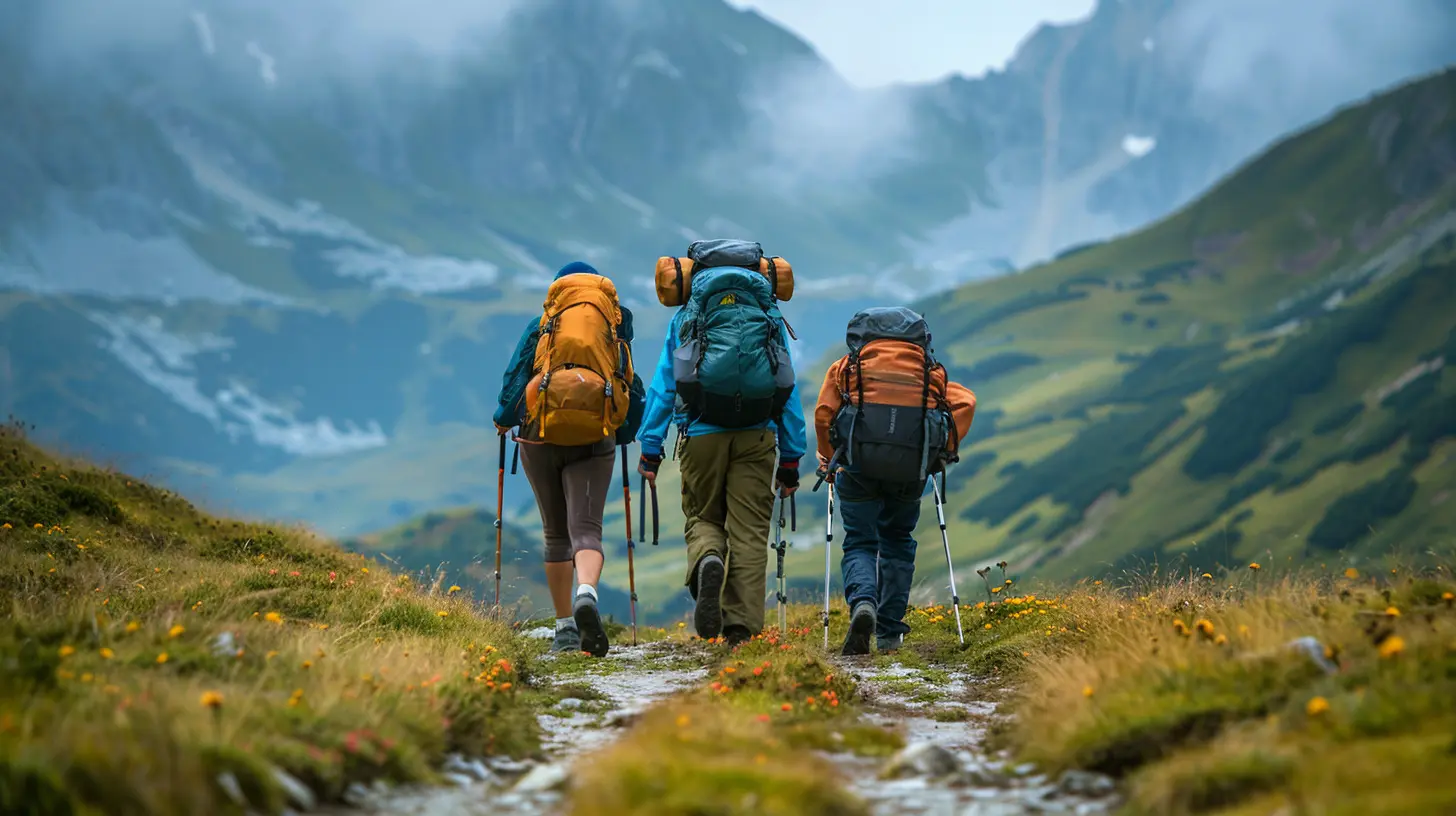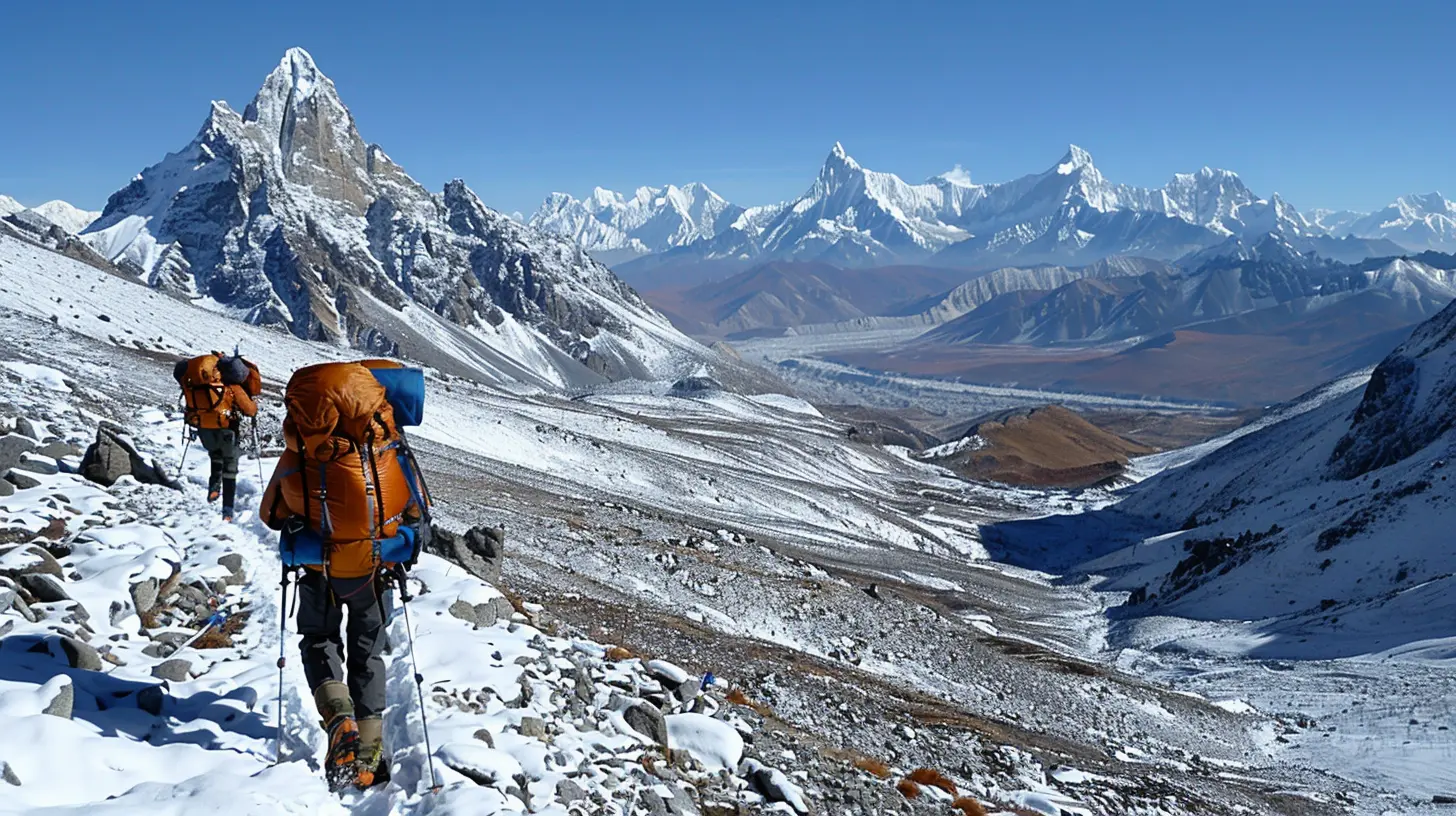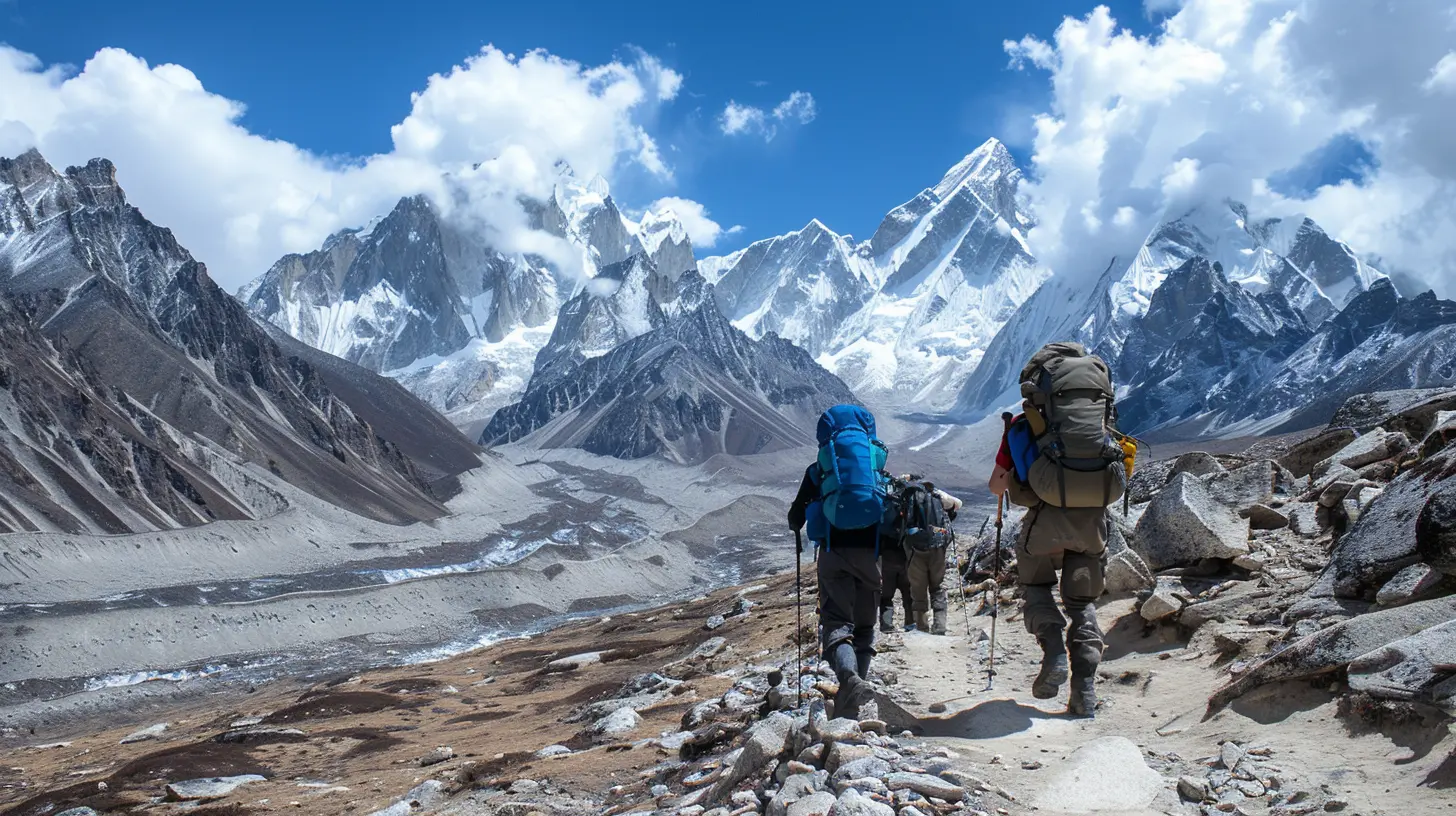Preparing for Altitude: Backcountry Hiking in the High Mountains
8 June 2025
So, you're thinking about tackling some high-altitude backcountry hiking? Well, buckle up, buttercup, because the mountains don’t play nice. The air gets thinner, your lungs work overtime, and if you're not careful, altitude sickness will hit you like a ton of bricks. But don’t worry—I’ve got your back. With the right prep, you’ll be conquering those majestic peaks like a seasoned alpine badass. Let’s get into it. 
Understanding Altitude and Its Effects
Why Altitude Matters
Look, unless you're secretly a Himalayan yak, your body isn’t naturally equipped for high-altitude adventures. Once you climb above 8,000 feet (2,400 meters), the oxygen levels start dropping, and your body struggles to keep up. Your heart beats faster, your breath comes in short gasps, and dehydration sneaks in quicker than a backcountry storm.The Beast Called Altitude Sickness
Altitude sickness is the unwelcome hitchhiker on your high-elevation journey. Symptoms range from mild headaches to full-blown nausea, dizziness, and an overwhelming urge to kiss the ground at sea level. And trust me, ignoring these warning signs can lead to dangerous conditions like High-Altitude Pulmonary Edema (HAPE) or High-Altitude Cerebral Edema (HACE). Both can be fatal. Yeah, not exactly the hiking vibe you were going for, right?
Prepping Your Body for the Climb
1. Train Like You Mean It
You wouldn’t run a marathon without training first, so why would you take on high-altitude hiking without prepping your body? Here’s what you need to do:- Cardio is King – Running, cycling, swimming—anything that gets your heart pumping will help your body cope with lower oxygen levels.
- Leg Day, Every Day – Okay, maybe not every day, but strong legs make climbing way easier. Squats, lunges, and stair climbs should be your best friends.
- Simulate the Altitude – If you can, train at higher elevations before your big trip. No mountains nearby? High-altitude simulation masks or even sleeping in altitude tents can help.
2. Hydrate Like Your Life Depends on It (Because It Does)
Dehydration at high altitudes happens fast. The dry air steals moisture from your body like an ex who took your favorite hoodie and never gave it back. Drink plenty of water before, during, and after your hike. Aim for at least 3-4 liters per day, and yes, that means peeing more often. Just roll with it.3. Fuel Your Body the Right Way
Your body burns calories like a furnace at high altitudes, so you’ll need extra fuel. Load up on complex carbs, healthy fats, and quality proteins. Nuts, oats, jerky, and energy bars should be staples in your backpack. Oh, and if you were thinking about cutting back on salt—don’t. Your body needs electrolytes to function properly in high-altitude conditions.4. Acclimatization is NOT Optional
Want to avoid altitude sickness? Take your time getting used to the elevation.- Climb high, sleep low – Hike to a higher altitude during the day, but sleep at a lower elevation to allow your body to adjust.
- Give it a day or two – If you’re heading above 10,000 feet, spend a couple of nights at intermediate elevations before going higher.
- Listen to your body – If you’re feeling like trash, take a break. Pushing through altitude sickness can turn your trek into a medical emergency.

Gearing Up for High-Altitude Hiking
1. Layer Like a Pro
Mountain weather is moodier than a reality TV star. One minute, it’s sunny; the next, you’re caught in a freezing windstorm. Layering is the key to staying comfortable:- Base Layer – Moisture-wicking fabric to keep you dry.
- Mid Layer – Insulation to trap warmth (think fleece or down).
- Outer Layer – Waterproof and windproof shell to keep the elements out.
2. The Right Boots Make All the Difference
If you think you can get away with flimsy sneakers, bless your heart. Invest in legit, broken-in hiking boots with ankle support and a solid grip. Your feet will thank you when you're navigating rocky, uneven trails at 12,000 feet.3. Trekking Poles: Not Just for Old Folks
Trekking poles save your knees on steep descents, boost your endurance, and help you balance when you’re stumbling over loose scree. Still think they’re uncool? Suit yourself, but your legs will wish you had them.4. Sunglasses and Sunscreen Are Non-Negotiable
The sun at high altitudes is no joke. UV exposure increases with elevation, and snow or rock surfaces reflect those rays straight into your face. Wear high-quality sunglasses (polarized if possible) and slather on SPF like your future skin depends on it—because it does.5. Essential Survival Gear
- Map, Compass, or GPS – Because cell service in the mountains is about as reliable as a flimsy tent in a windstorm.- First Aid Kit – Blister pads, painkillers, and altitude meds like Diamox should be in your pack.
- Headlamp – Because getting stuck in the dark is not an adventure, it's a nightmare.
- Emergency Blanket – Lightweight, compact, and can save your life if the temperature drops unexpectedly.
- Water Filtration System – Streams look clean, but bacteria and parasites are lurking. Trust me, you don’t want to deal with giardia mid-hike.

Mental Toughness: The Secret Weapon
Being physically prepared is great, but altitude hiking is as much a mental challenge as it is a physical one. The air gets thinner, progress slows, and doubt starts creeping in. You’ll question why you’re doing this, but that’s where mindset comes in.- Stay positive – Remind yourself why you started this hike.
- Break it down – Focus on one step at a time instead of how far you have left.
- Know when to turn back – The mountains will always be there. If things feel unsafe, live to hike another day.
Final Tips Before You Hit the Trail
✔ Know your route – Study maps, check weather conditions, and have an emergency plan.✔ Check permit requirements – Some high-altitude destinations require permits, so don’t get caught unprepared.
✔ Respect the environment – Pack out all trash, avoid disturbing wildlife, and stick to marked trails.
✔ Keep an eye on symptoms – If you or your hiking buddy start feeling the effects of altitude sickness, descend ASAP.
Ready to Conquer the High Mountains?
High-altitude hiking isn't for the faint of heart, but with the right preparation, you’ll be scaling peaks like a pro. Train smart, pack wisely, and respect the mountain. Because up there, Mother Nature makes the rules—and she does not negotiate. Now, go lace up those boots and chase those epic summit views.all images in this post were generated using AI tools
Category:
Backcountry TravelAuthor:

Kelly Hall
Discussion
rate this article
2 comments
Fenris Gomez
This article offers invaluable insights for anyone planning a backcountry hike in high altitudes. The tips on acclimatization, hydration, and proper gear are essential for a safe and enjoyable experience. I appreciate the emphasis on awareness of altitude sickness—it's a crucial reminder for all adventurers. Great read!
June 9, 2025 at 3:04 PM

Kelly Hall
Thank you for your kind words! I'm glad you found the insights helpful for safe and enjoyable high-altitude hiking. Happy adventuring!
Callista Scott
This article beautifully captures the essence of preparing for high-altitude hiking. It serves as a crucial reminder of the importance of acclimatization and physical readiness. I appreciate the practical tips offered and the emphasis on respecting nature's power. Responsible preparation truly enhances the adventure and ensures safety. Happy trails!
June 8, 2025 at 4:34 AM

Kelly Hall
Thank you for your thoughtful feedback! I'm glad you found the tips helpful and appreciate the emphasis on safety and respect for nature. Happy hiking!


